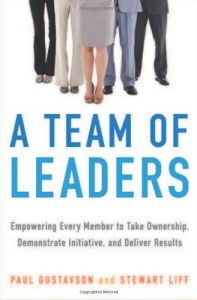Join getAbstract to access the summary!

Join getAbstract to access the summary!
Paul Gustavson and Stewart Liff
A Team of Leaders
Empowering Every Member to Take Ownership, Demonstrate Initiative, and Deliver Results
AMACOM, 2014
What's inside?
Instead of building teams with leaders, develop teams of leaders.
Recommendation
Modern corporations require teamwork, which gives rise to outdoor team-building programs, like rock climbing, ropes courses, scavenger hunts, and so on. Unfortunately, when corporate participants return to their offices, most quickly forget such out-of-the-routine team-building lessons. Consultants Paul Gustavson and Stewart Liff offer an alternative: the “Five-Stage Team Development Model.” They expertly – though at times cumbersomely – explain the principles behind their “team of leaders” program, how it works and the benefits it provides. Their interesting but complex model – with its multiple steps and layers – rests upon a solid theoretical base (a team of leaders is a clearly desirable goal), but may prove challenging to apply in the real world. getAbstract recommends this ambitious manual – and its clear graphics – to executives, managers, start-ups and HR officers who can mine it for innovative, forward-looking strategies for team building, more efficient work flow, greater worker engagement and increased profits.
Summary
About the Authors
Paul Gustavson is an author, board member, adviser, speaker and organizational design consultant. Stewart Liff, a classically trained artist, worked for the US government for 32 years.




















Comment on this summary